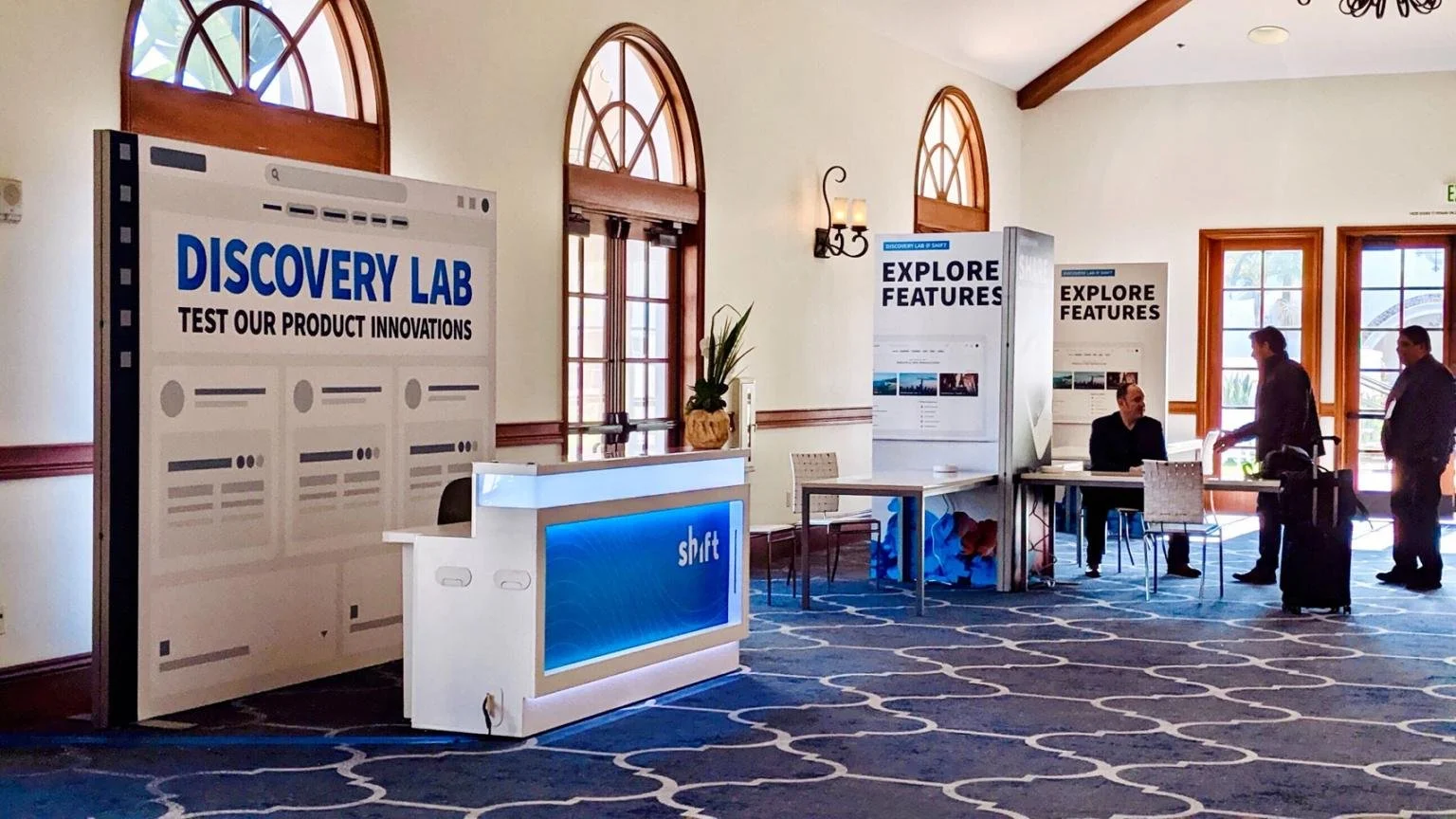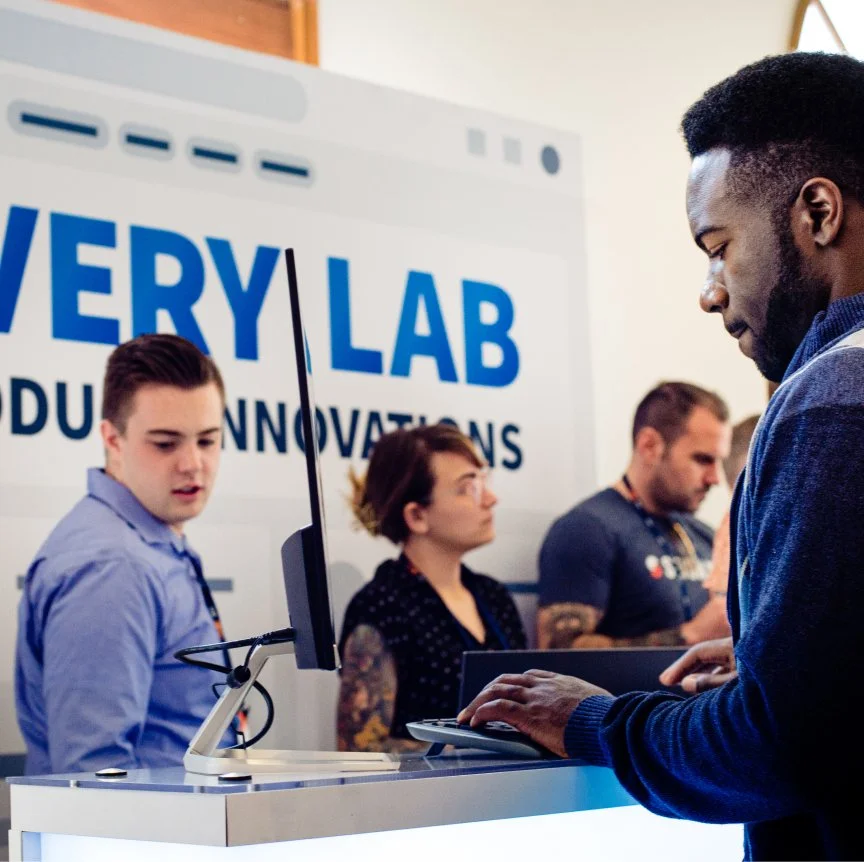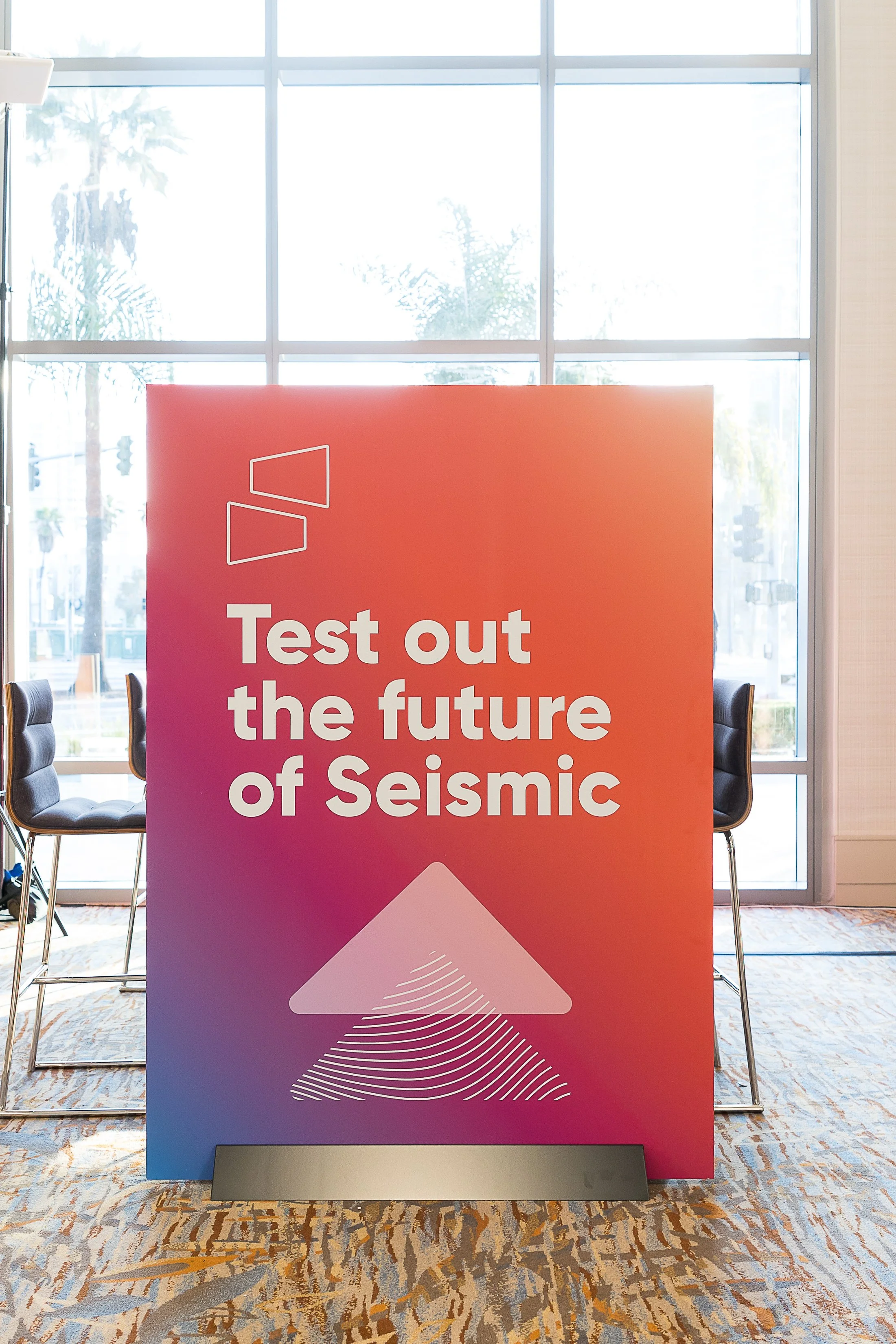Facilitating Seismic’s discovery research lab
November 2022
A bit of history
Every year Seismic holds a customer conference for marketers, sales enablers, and sellers alike. Seismic is a thought leader in the sales enablement space and hosts special speakers, reveals new features, and educations sessions for conference attendees. Back in 2019, the Seismic product design team created a brand new booth for the conference to conduct discovery research with attendees. At the time, Seismic’s product design team was comprised of 7 product designers and one product design intern…Me!
Throughout Seismic’s growth as a company, it realized the value of design and UX research to create better experiences and workflows for customers. With the sales enablement conference happening every year, the product design team thought it would be a great opportunity to start a user research booth, called the “Seismic Discovery Lab.” The intent of the lab was to concept test new designs and usability test ready to develop designs with conference attendees. Since I was was Seismic’s first-ever product design intern at the time, I got the opportunity to participate in the booth and use the user research the skills I learned at UC San Diego to help run tests with conference attendees. I learned so much about marketing and sales enablement day to day duties, which helped to elevate me within the product design team.
Fast forward to 2022
In the fall of 2022, Seismic hosted its first in-person sales enablement conference since 2019. Given my previous experience with the Discovery Lab and passion for user research I was asked to co-lead and plan the booth for the entire design team of 25+ people. With one of my colleagues I planned a new booth layout, in which we worked with our events team to build private testing stations where conference attendees could schedule a time to take one or many tests. The branding team helped to bring our vision to life and advertised it to the 600+ attendees of the conference.
Teaching my team
Seismic used Usertesting.com as platform to conduct usability tests with both recruited individuals or in-house testers, but it was not widely used by all of our designers. Because of this, I was tasked with developing a guide on how to create unmoderated usability tests on Usertesting.com and create prototypes in which testers could play with and give us feedback on. I made documentation to walk our team through the different types of questions that our team members could create and how to write non-leading questions that results in non-biased feedback. Additionally, I made step by step instructions on how to build a test using Usertesting.com. Given that not all of our team wanted to conduct usability tests, I also informed our designers how to write survey questions or scripts for concept testing.
The days of the conference
We had a total of 3 days to attract and test with conference attendees. I worked with 4 of my team members to talk to customers and inform them how to take a usability tests. It was amazing to see the excitement of the attendees when hearing about our pre-released software solutions and interacting with our prototypes; some testers took up to 8 tests in a given session because of how much fun they had! I always find it intriguing to learn about our users’ day-to-day tasks and how they leverage our software to do their jobs. I personally talked to a few marketers and sales enablers who told me about some work arounds they had created with our software because it didn’t work for them. We ended up gathering data from 123 user tests and 70+ survey responses, which I consider a HUGE success!
Post conference
After the conference, our product designers distilled the research into insights for their respective product areas. We also decided to create a presentation series with the entire product team of product managers, product designers, engineers, product marketers, and product leaders. In this series each designer on our team revealed what solution or product area the tested, how they gathered test responses, what they learned from the research, and how they leverages those insights to improve their solutions. These presentations helped highlight the importance of doing user research as a company and helped some of our less-research savvy product managers understand what user research is. The success resulted in changing the product planning process to include more time each quarter for discovery research for every product roadmap!
Overall, I am extremely pleased with our results and the movement I helped create with the Seismic Discovery Lab and I am so excited to lead the Lab next at next year’s sales enablement conference!








